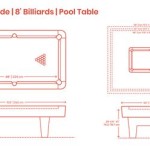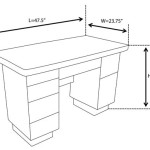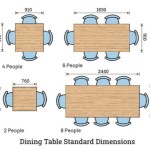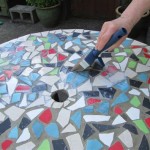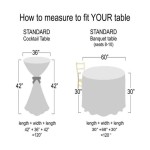Grey Dining Table Decor Ideas: A Comprehensive Guide
Grey dining tables have become increasingly popular due to their versatility and ability to complement a wide range of interior design styles. This neutrality allows for significant flexibility in decorating, enabling homeowners to create a dining space that is both stylish and functional. The following article explores various decor ideas for grey dining tables, focusing on color palettes, centerpieces, tableware, and overall styling strategies.
Understanding the Neutrality of Grey
Grey, as a neutral color, acts as a canvas upon which other colors and textures can be layered. This characteristic makes it an ideal choice for a dining table, where the focus is often on the meal and the company rather than the table itself. The specific shade of grey, whether light, medium, or dark, will influence the overall ambiance of the room and dictate the most suitable complementary colors. Light grey tables tend to create a more airy and open feeling, while darker grey tables offer a sense of sophistication and grounding. Consider the existing color scheme of the dining room to determine the optimal shade of grey for the table.
The undertones of the grey are also crucial. Some greys lean towards warmer tones, appearing almost beige or taupe in certain lighting conditions. Others have cooler undertones, exhibiting a bluish or greenish hue. Understanding these subtle variations will help in selecting the right decor elements that harmonize with the table's specific color profile. For instance, a grey with warm undertones might pair well with earth tones and natural materials, while a cooler grey might benefit from accents of silver, blue, or white.
The material of the grey dining table also plays a role. A grey wood dining table offers a rustic or farmhouse aesthetic, while a grey metal or glass table often suggests a more modern or industrial style. The chosen material will influence the types of decor that will best complement the table. For example, a wooden table might benefit from a linen table runner and ceramic tableware, while a metal table might pair well with geometric placemats and stainless steel serving pieces.
Exploring Color Palette Options
The color palette chosen for the table decor can dramatically alter the dining room's overall feel. Several approaches can be taken, depending on the desired aesthetic. One option is to embrace a monochromatic scheme, focusing on different shades and textures of grey. This creates a sophisticated and understated look. Another approach is to introduce pops of color to create visual interest and energy.
For a minimalist and modern aesthetic, consider pairing the grey dining table with white tableware, silver accents, and a simple centerpiece of green foliage. This combination creates a clean and uncluttered look that is both stylish and functional. The use of geometric patterns in placemats or napkins can further enhance the modern feel. Alternatively, black accents can provide a dramatic contrast against the grey, creating a bold and contemporary style.
To create a warmer and more inviting atmosphere, consider incorporating earth tones such as browns, beiges, and greens. These colors complement the natural neutrality of grey and create a sense of comfort and relaxation. Wooden elements, such as bowls or serving trays, can further enhance the earthy feel. This palette works particularly well with light to medium grey tables.
For a more vibrant and playful look, consider incorporating pops of color such as yellow, orange, or turquoise. These colors add energy and personality to the dining space. When using bold colors, it is important to balance them with neutral elements to avoid overwhelming the room. For example, brightly colored napkins can be paired with a neutral tablecloth and simple tableware. This approach works well with both light and dark grey tables.
Another option is to draw inspiration from nature. Consider using colors such as blues, greens, and browns to create a calming and refreshing atmosphere. These colors evoke a sense of tranquility and can be particularly effective in dining rooms that overlook a garden or natural landscape. Floral centerpieces and natural fiber placemats can further enhance the connection to nature.
Selecting Centerpieces for a Grey Dining Table
The centerpiece is often the focal point of the dining table, and it can significantly impact the overall aesthetic. The size, style, and material of the centerpiece should complement the size and shape of the table, as well as the overall decor of the room. Several options can be considered, ranging from simple floral arrangements to more elaborate sculptural displays.
A classic floral arrangement is always a popular choice. The flowers can be chosen to complement the color palette of the room or to add a pop of color. For a modern aesthetic, consider using a single type of flower in a minimalist vase. For a more traditional look, a larger arrangement with a variety of flowers and foliage can be used. The size of the arrangement should be proportional to the size of the table, and it should not obstruct the view of people sitting across from each other.
For a non-floral option, consider using a collection of candles or lanterns. These can create a warm and inviting ambiance, especially during evening meals. Varying the heights and sizes of the candles or lanterns can add visual interest. Consider using unscented candles to avoid interfering with the aroma of the food. Alternatively, using a single large candle in a decorative holder can create a simple and elegant centerpiece.
Another option is to use a sculptural object or a collection of objects. This could be anything from a piece of art to a collection of natural elements such as stones, shells, or driftwood. The key is to choose something that reflects the personal style of the homeowner and that complements the overall decor of the room. The objects should be arranged in a visually appealing way, and they should not be too large or overwhelming.
For a more seasonal approach, consider changing the centerpiece to reflect the current season. For example, in the fall, a centerpiece of pumpkins, gourds, and colorful leaves can be used. In the winter, a centerpiece of pinecones, evergreens, and berries can be used. This approach adds a festive touch to the dining room and reflects the changing seasons.
A simple bowl of fruit can also make a beautiful and functional centerpiece. Choose fruits that are in season and that complement the color palette of the room. The fruit can be arranged in a visually appealing way, and it can be eaten as a snack. This is a particularly good option for informal dining spaces.
Choosing Tableware and Linens
The choice of tableware and linens can greatly enhance the overall look of the dining table. The style, color, and material of these items should complement the table and the overall decor of the room. Consider the formality of the dining space and the type of meals that will be served when making these choices.
For a minimalist and modern aesthetic, consider using white tableware with simple lines and a glossy finish. This creates a clean and uncluttered look that is both stylish and functional. Silver cutlery and clear glass stemware can further enhance the modern feel. A simple linen tablecloth or runner can add a touch of elegance without being overly formal.
To create a warmer and more inviting atmosphere, consider using earth-toned tableware with a matte finish. This can be paired with wooden cutlery and rustic glass stemware. A linen tablecloth or runner in a natural color such as beige or brown can further enhance the earthy feel. This palette works particularly well with light to medium grey tables.
For a more formal dining experience, consider using fine china with intricate patterns and gold accents. This can be paired with silver or gold cutlery and crystal stemware. A damask tablecloth or runner can add a touch of luxury and sophistication. This approach works well with darker grey tables.
The choice of placemats and napkins can also greatly impact the overall look of the dining table. Placemats can protect the table from spills and stains, while napkins can add a touch of elegance and sophistication. Choose placemats and napkins that complement the color palette and style of the tableware and linens.
For a casual dining experience, consider using woven placemats and cloth napkins in a variety of colors and patterns. This can add a touch of personality and fun to the dining space. For a more formal dining experience, consider using embroidered placemats and linen napkins with intricate detailing.
Ultimately, the choice of tableware and linens should reflect the personal style of the homeowner and the overall decor of the dining room. Experiment with different combinations to find what works best for the space. Consider the practicality and functionality of the items as well as their aesthetic appeal.

7 Best Grey Dining Tables Ideas Room Design Decor

Neutral Dining Room Makeover Inspired By Artwork

Dark Gray Dining Room Shelves Design Ideas

10 Unique Grey Dining Room Ideas Furniturebox

25 Elegant And Exquisite Gray Dining Room Ideas

25 Elegant And Exquisite Gray Dining Room Ideas Decoist

Grey Dining Room Ideas To Transform Your Home

Dining Table Decor Tips To Decorate Your Next Feast

Godeer 6 Piece Gray Kitchen Dining Table Set Wooden Top Rectangular 4 Chairs And Bench St000013lxlaae

31 Tricks For Incorporating Farmhouse Dining Table Décor



